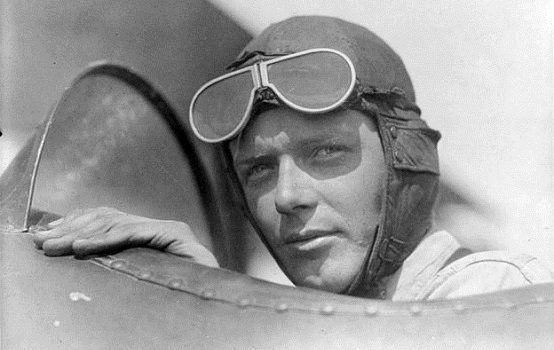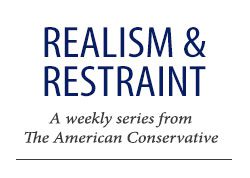What Was ‘America First’?

In his inaugural address, Donald Trump used a slogan that he had already quoted approvingly in earlier speeches: “From this day forward,” he said, “it’s going to be only America first. America first.” Liberal writers profess to find the phrase terrifying, a confirmation not just of Trump’s dictatorial instincts, but also of his racial and religious prejudice. Sidney Blumenthal is one of many to recall that the slogan “was emblazoned on the banner of the movement for appeasement of Hitler.” In reality, the original America First movement of 1940–41 was far broader and more complex than this critique might suggest, and was actually much more respectable and even mainstream. It was a sincere anti-war movement that drew from all shades of the political spectrum. Its later stigmatization as a Nazi front group is tragic in its own right, but it also closes off legitimate paths of public debate that have nothing whatever to do with authoritarianism or bigotry.
 The America First Committee (AFC) was formed in September 1940 and operated until the Pearl Harbor attack. In all that time, though, historical attention focuses on just one shameful moment, namely the speech that Charles Lindbergh gave in Des Moines, Iowa, on September 11, 1941, when he openly attacked Jews as a force driving the country toward war. The speech was appalling—and worse, Lindbergh’s anti-Semitism really did represent the view of a small minority of AFC supporters. That event, above all, fatally tainted the memory of America First. In modern television documentaries, the movement is usually mentioned alongside authentic Nazi groups like the clownish German American Bund, whose members paraded in brown shirts and swastikas. The impression we are left with is that the AFC was a deeply unsavory pressure group that tried to undermine the political will of a nation united behind the Roosevelt administration in its determination to fight Hitler when the proper time arose. Any ideas associated with America First must, by definition, be regarded as anti-Semitic, pro-Nazi, and toxic.
The America First Committee (AFC) was formed in September 1940 and operated until the Pearl Harbor attack. In all that time, though, historical attention focuses on just one shameful moment, namely the speech that Charles Lindbergh gave in Des Moines, Iowa, on September 11, 1941, when he openly attacked Jews as a force driving the country toward war. The speech was appalling—and worse, Lindbergh’s anti-Semitism really did represent the view of a small minority of AFC supporters. That event, above all, fatally tainted the memory of America First. In modern television documentaries, the movement is usually mentioned alongside authentic Nazi groups like the clownish German American Bund, whose members paraded in brown shirts and swastikas. The impression we are left with is that the AFC was a deeply unsavory pressure group that tried to undermine the political will of a nation united behind the Roosevelt administration in its determination to fight Hitler when the proper time arose. Any ideas associated with America First must, by definition, be regarded as anti-Semitic, pro-Nazi, and toxic.
The fundamental problem with that view is that on most critical issues, the AFC held positions that were close to a national consensus, and in these matters, it was FDR and the interventionists who were the minority. The AFC can be understood as the clearest institutional manifestation of the nation’s deep-rooted anti-war sentiment.
It is very difficult today to understand just how deeply and passionately pacifist the U.S. was through the 1930s, and how strongly that sentiment persisted almost to the outbreak of war in 1941. That had nothing to do with anti-Semitism, or with sympathy for Hitler. Rather, it arose from a widespread perception of the First World War as an unmitigated catastrophe. According to this consensus, U.S. involvement in that earlier war arose because of the machinations of over-mighty financiers and plutocrats—what we might call the 1 percent—who deployed vicious and false propaganda from London and Paris. Also complicit were the arms dealers, for whom the phrase “merchants of death” now became standard.
Throughout the New Deal years, Republicans and Democrats alike worked to expose these crimes, and to ensure that they could never be repeated. Between 1934 and 1936, the Senate committee headed by Gerald Nye provided regular media copy about the sinister origins of U.S. participation in the First World War, a theme taken up in bestselling books. Those critical ideas led to the creation of a detailed series of Neutrality Acts of 1936–37, designed to prevent U.S. involvement in any new conflict. From 1935 through 1940, Congress repeatedly voted on the Ludlow Amendment, a proposed constitutional amendment that would have made it impossible to go to war without the consent of a national referendum except in cases of direct attack. As late as August 1941, when the House of Representatives approved a measure to extend the term of military draft service and ensure that the U.S. would retain a large fighting force, it did so by a single vote: 203–202.
Anti-war ideas saturated popular culture. Look, for instance, at the 1938 film You Can’t Take It With You, directed by the thoroughly mainstream Frank Capra. In one scene, the sympathetic anarchist played by Lionel Barrymore mocks the bureaucrat who is trying to make him pay taxes. What do you want the money for, he asks? To build battleships? They’re never going to be any good to anyone.
From 1939 to 1941, the Nazi-Soviet pact brought American communists wholeheartedly into the peace crusade, with results that are embarrassing in retrospect. Today, popular-culture historians cherish the memory of iconic folk singers like Pete Seeger, Woody Guthrie, and the Almanac Singers. But listen to the songs they were singing in 1940 and 1941, which mock the Roosevelts as warmongers who dutifully serve the interests of the British Empire: why should I die for Singapore? One tuneful Almanac singalong compares FDR’s appetite for war with his agricultural policy. The government destroys crops to keep prices high, says the song, so let’s plow under, plow under, every fourth American boy!
In such an atmosphere, even cynical jokes went viral. In 1936, Princeton students organized a prank organization called the Veterans of Future Wars. Since the government was so likely to draw them into idiotic wars, they argued, could they please have their bonuses now, instead of after the conflicts had ended? Veterans of Future Wars became a national campus sensation, with 60,000 members at its height. As in the 1960s, the anti-war cause was a campus youth movement, with its own potent folk songs.
From 1939, a series of ad hoc anti-war committees and campaign groups emerged across the country, out of which the AFC coalesced. America First had 800,000 paying members, and that at a time when membership meant far more than merely ticking a box on a website. Some AFC leaders were hard-right anti-New Dealers, but many others were former members of the Progressive movement, dedicated to social improvement and liberal reconstruction. Across the ideological board, women were very well represented. The churches were another key source of recruitment. Most American Roman Catholics, especially the Irish leadership, disliked the prospect of an alliance with imperial Britain, but many AFC supporters were liberal Protestants, organized through the mainline’s flagship magazine, Christian Century. AFC was cross-party, and cross-ideological.
Lindbergh’s horrible speech apart, virtually none of AFC’s campaigning or publicity materials so much as mentioned Jews. Instead, they raised a series of challenging questions about whether American interests were well-served by direct involvement in a war that might have consequences as grim and futile as those of its predecessor. What corporate interests desired such an insane conflict, and which media? Why were Americans so persistently vulnerable to manipulation and crude propaganda by foreign nations? Why would people not understand the administration’s blatant efforts to provoke an incident that would start a new war? (The AFC was actually dead right here. Throughout late 1941, FDR really did strive to provoke clashes between U.S. destroyers and German U-boats.)
Such questions are all the more relevant in light of more recent historical developments: questions about the nature of executive power in matters of foreign policy and the official use of propaganda and deceit to achieve a political end. You do not need to be a crypto-Nazi to oppose any war except one fought in the direct defense of national interests.
If Donald Trump’s administration wants to start a national debate about those aspects of the America First tradition, then good for them.
Philip Jenkins is the author of The Many Faces of Christ: The Thousand Year Story of the Survival and Influence of the Lost Gospels. He is distinguished professor of history at Baylor University and serves as co-director for the Program on Historical Studies of Religion in the Institute for Studies of Religion.
Comments